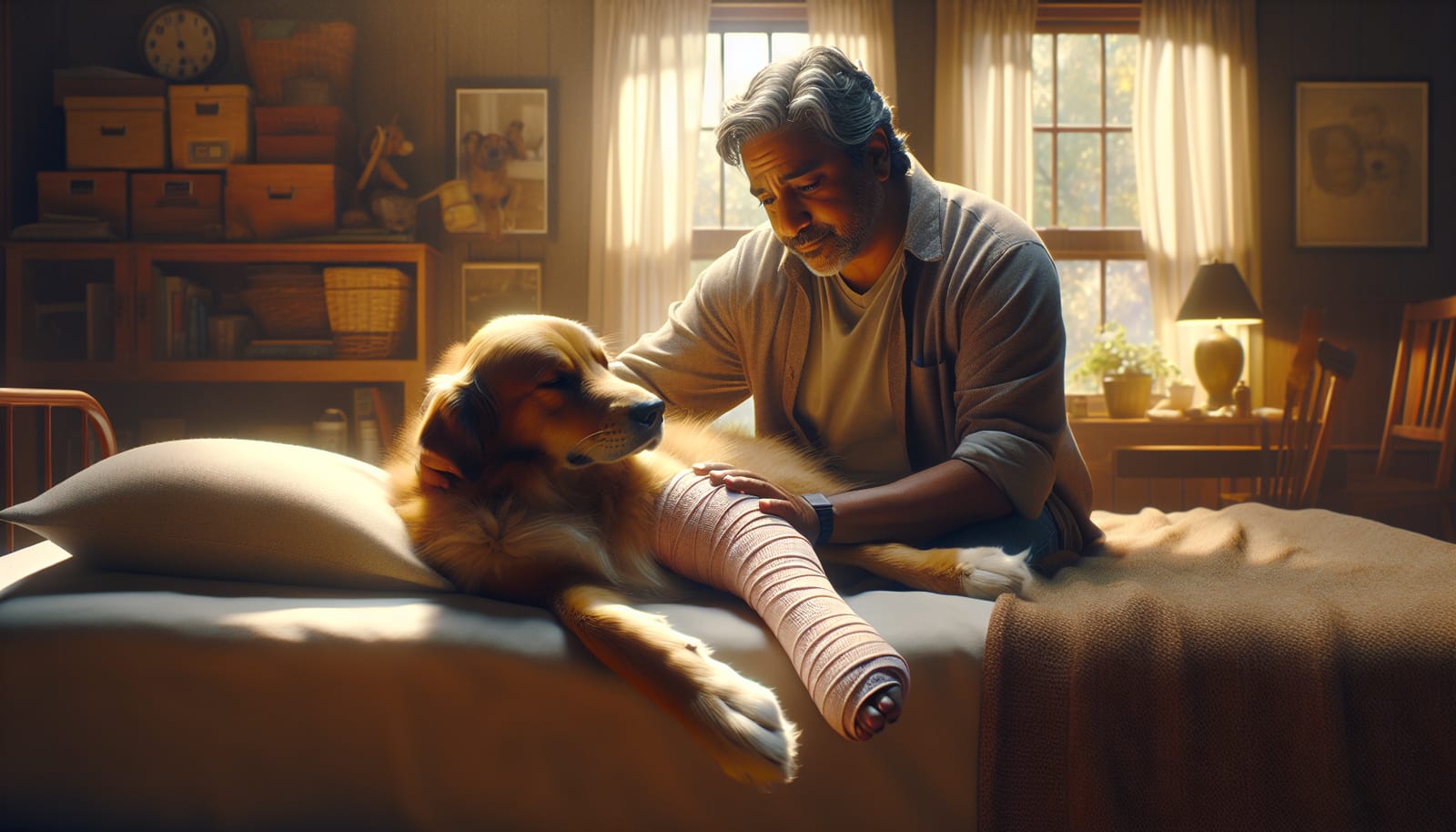As pet owners, our furry companions hold a special place in our hearts. When they experience a sprain or minor injury, it can be distressing not only for them but for us as well. Understanding how to help your pet recover can make all the difference in their healing process. In this article, we’ll explore practical steps you can take to support your beloved pet through their recovery journey, ensuring they bounce back stronger than ever.
Understanding Sprains and Minor Injuries in Pets
Just like humans, pets can suffer from sprains, strains, and other minor injuries. A sprain occurs when the ligaments—the tough bands connecting bones at a joint—are stretched or torn. Common signs of a sprain include limping, swelling, and reluctance to put weight on the affected limb. Minor injuries might also include bruising or minor cuts that, while they may seem small, require proper care to heal effectively.
Recognizing the signs early can help you take swift action. If your pet shows any signs of discomfort, don't hesitate to consult a veterinarian for a proper diagnosis. Remember, your vet is your best ally in ensuring a speedy recovery for your furry friend.
Initial Care and First Aid
When you suspect your pet has suffered a minor injury, the first step is to assess the situation calmly. If the injury seems serious, such as a fracture or severe swelling, seek veterinary help immediately. However, for minor injuries, you can provide initial care at home.
Keep Them Calm: Create a serene environment. Reduce noise and limit activity to help your pet relax.
Ice the Area: Apply a cold pack wrapped in a cloth to the injured area for about 10-15 minutes at a time. This can help reduce swelling and alleviate pain.
Elevation: If possible, keep the injured limb elevated to minimize swelling. Just be sure your pet is comfortable and not in pain.
Monitor Their Behavior: Watch for changes in appetite, energy levels, or any signs of increased pain. These could indicate that the injury is more severe than initially thought.
These initial steps can significantly impact how your pet feels and recovers from their injury.
Creating a Comfortable Healing Environment
Once you've assessed the injury and taken initial care steps, it's time to create a supportive environment for your pet’s recovery. Here’s how:
Cosy Resting Area: Provide a comfortable bed in a quiet, warm area of the house. This space should be free from drafts and distractions, allowing your pet to rest and heal.
Easy Access to Essentials: Ensure that food, water, and a litter box (for cats) are easily accessible without requiring your pet to move around too much.
Limit Activity: Use baby gates or a crate to restrict movement if necessary. Keep walks short and slow, and discourage jumping or running during the recovery period.
Engage Their Mind: While physical activity should be limited, mental stimulation is still important. Offer puzzle toys or gentle play sessions that don’t strain their injury.
Creating a nurturing environment not only aids in physical recovery but also provides emotional support, helping your pet feel safe and loved.
Nutrition and Hydration
A balanced diet plays a vital role in recovery. Ensure your pet is eating high-quality food that meets their nutritional needs. Depending on the injury, your veterinarian might recommend specific dietary adjustments.
Hydration is Key: Always provide fresh water. Staying hydrated is essential for recovery and overall health.
Consider Supplements: Some pets may benefit from supplements like omega-3 fatty acids, which can help reduce inflammation. Always consult your veterinarian before introducing new supplements.
A well-nourished pet is more likely to recover quickly and effectively.
Follow-Up Care and Rehabilitation
As your pet starts to feel better, it's essential to keep up with follow-up care. Regular veterinary check-ups will ensure that the injury is healing properly and that no complications arise.
Physical Rehabilitation: Depending on the severity of the injury, your veterinarian may suggest physical therapy. This can range from simple exercises to professional rehabilitation services that help restore strength and mobility.
Gradual Return to Activity: Once your vet gives the green light, gradually reintroduce your pet to their regular activities. Start with short walks and low-impact play, monitoring closely for any signs of discomfort.
Observe for Changes: Keep an eye on your pet’s recovery. If they seem to be in pain or not improving, contact your veterinarian for further advice.
A thorough follow-up plan will not only help your pet heal but can also prevent future injuries.
Emotional Support and Bonding
During recovery, your pet may feel vulnerable or anxious. Providing emotional support is just as important as physical care. Spend quality time with your pet – gentle petting, soothing words, or simply lying beside them can help reassure them that they are loved and safe.
Routine is Comforting: Keeping a consistent routine can provide comfort to your pet. Regular feeding times, gentle walks, and playtime (as permitted) can help them feel more secure.
Bonding Activities: Engage in low-impact bonding activities like grooming or quiet cuddles. This not only strengthens your bond but can also help them heal emotionally.
The love and care you provide during this time will foster trust and strengthen your relationship, helping them to feel secure as they recover.
Helping your pet recover from a sprain or minor injury requires a balance of physical care, emotional support, and a little patience. By understanding their needs and providing a nurturing environment, you can guide them through their healing journey. Remember, your love and attention are the best medicine for your furry friend.
As you embark on this journey together, cherish the moments of healing and recovery. With your support, your pet will soon be back to their playful, happy self, ready to explore the world once again. Together, you can conquer this challenge and come out stronger on the other side!

